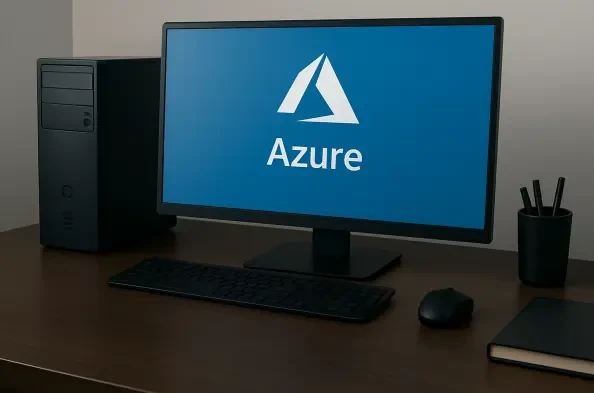In an era where cloud infrastructure underpins the operations of countless organizations, a recently discovered vulnerability in Azure Active Directory (Azure AD) has sent shockwaves through the cybersecurity community, highlighting the fragility of digital ecosystems when misconfigurations are left unchecked. This critical flaw, found in misconfigured ASP.NET Core application files, has exposed sensitive credentials, opening the door for attackers to infiltrate systems with alarming ease. Specifically, publicly accessible configuration files like appsettings.json have been found to contain vital information such as ClientId and ClientSecret, which can be exploited to gain unauthorized access to an organization’s cloud environment. This discovery serves as a stark reminder of the persistent dangers lurking in cloud-native setups, where a single oversight can cascade into catastrophic breaches. As threats evolve, understanding the nature of this vulnerability and its implications becomes paramount for organizations aiming to safeguard their digital assets.
Understanding the Vulnerability
The Nature of the Exposed Credentials
The core of this security flaw lies in the improper handling of sensitive data within ASP.NET Core applications, particularly through the appsettings.json file, which often stores critical Azure AD credentials. When these files are inadvertently made publicly accessible due to server misconfigurations or flawed deployment practices, they become a goldmine for malicious actors. Attackers can extract details like ClientId and ClientSecret, using them to authenticate through Microsoft’s OAuth 2.0 endpoints via the Client Credentials flow. Once authenticated, a Bearer token is issued, granting access to Microsoft Graph APIs. Depending on the permissions tied to the compromised application, this access can extend to sensitive services such as SharePoint, OneDrive, and Exchange Online. The ease with which these credentials can be exploited underscores a glaring gap in secrets management, where even a minor oversight can lead to unauthorized entry into an organization’s most protected digital spaces.
Consequences of Unauthorized Access
Beyond simply gaining entry, the ramifications of this vulnerability are deeply concerning, as attackers can leverage the stolen credentials to orchestrate far-reaching damage within the compromised environment. With access to Microsoft Graph APIs, adversaries can enumerate users and groups within Azure AD, retrieve confidential data, and even escalate privileges to gain deeper control. Perhaps most alarming is the potential for attackers to deploy malicious applications within the tenant, establishing persistent access that can go undetected for extended periods. Such actions not only jeopardize data integrity but also erode trust in the security of cloud platforms. This scenario illustrates how a single misconfiguration can spiral into a full-scale breach, exposing organizations to risks like data theft, operational disruption, and reputational harm. The scale of potential fallout demands immediate attention to how credentials are stored and protected in cloud setups.
Mitigating the Risks
Root Causes and Systemic Failures
Delving into the reasons behind such exposures reveals a troubling pattern of systemic issues in application development and deployment that organizations must address to prevent future incidents. A primary factor is the misconfiguration of servers that inadvertently serve static configuration files to the public, often due to oversight during setup or updates. Additionally, deployment pipelines sometimes push internal files to production environments without adequate restrictions, amplifying the risk of exposure. Another contributing issue is the failure to utilize secure storage solutions like Azure Key Vault for sensitive data, leaving credentials vulnerable in plain-text formats. Compounding these problems is the absence of regular security testing and code reviews, alongside an overreliance on the assumption that internal files remain hidden. These lapses reflect a broader trend of prioritizing convenience over robust security practices, a mindset that must shift to safeguard cloud environments effectively.
Actionable Strategies for Prevention
To combat the risks posed by exposed Azure AD credentials, organizations must adopt a multi-layered approach to security that addresses both technical and procedural vulnerabilities with precision. Implementing strict file-access controls and ensuring configuration files are excluded from public hosting can significantly reduce exposure risks. Migrating sensitive data to secure vaults like Azure Key Vault is another critical step, as it encrypts and protects credentials from unauthorized access. Furthermore, integrating automated scanning tools to detect exposed secrets, alongside regular penetration testing, helps identify weaknesses before they can be exploited. Adhering to the principle of least privilege for Graph API permissions also limits the potential damage of a breach. These measures, when combined, create a robust defense against credential leaks, ensuring that even if one layer fails, others remain to protect the system. Reflecting on past oversights, it’s evident that proactive steps taken earlier could have thwarted many such threats.
Building a Culture of Security Awareness
Beyond technical fixes, fostering a culture of security awareness within organizations proves to be a vital component in preventing vulnerabilities like the Azure AD flaw from recurring. Educating developers and IT teams about the dangers of misconfigurations and the importance of secure coding practices is a cornerstone of this effort. Training programs that emphasize best practices for secrets management and the use of secure tools encourage accountability at every level. Encouraging collaboration between development and security teams ensures that potential risks are identified early in the deployment process. Additionally, establishing clear policies for regular audits and compliance checks helps maintain high security standards over time. By embedding security into the organizational ethos, companies reduce human error, which so often serves as the weakest link in cybersecurity defenses. Looking back, these cultural shifts play a pivotal role in strengthening resilience against evolving cloud-based threats.






